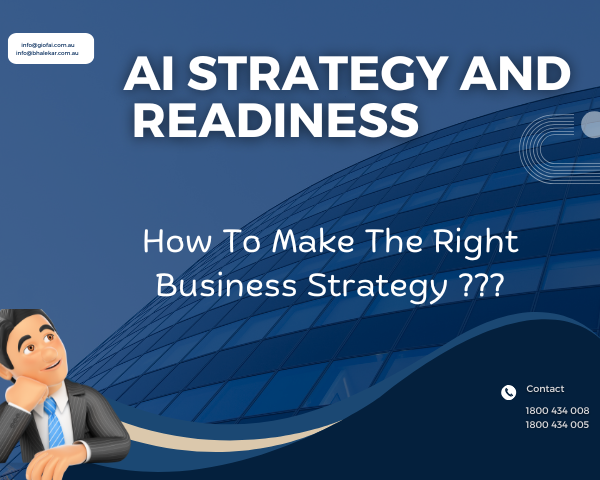AI Strategy and Readiness: A Comprehensive Guide to Future-Proofing Your Business

Artificial Intelligence (AI) is no longer an optional tool—it’s a critical driver of innovation, efficiency, and competitive advantage. However, implementing AI effectively requires more than just technology adoption. It demands a well-thought-out strategy and organizational readiness to align AI initiatives with business objectives. This article explores the key components of an AI strategy and how businesses can prepare for successful implementation.
What Is an AI Strategy?
An AI strategy is a roadmap that integrates artificial intelligence into a company’s operations, decision-making processes, and growth plans. Unlike traditional strategies, which rely on manual processes and historical data, AI strategies leverage machine learning, data analytics, and automation to drive innovation and improve efficiency.
Why It Matters:
- Enhances operational efficiency by automating repetitive tasks.
- Improves decision-making through predictive analytics.
- Boosts customer satisfaction with personalized experiences.
- Provides a competitive edge in rapidly evolving markets.
Key Components of an AI Strategy
Define Business Objectives:
- Start by identifying the specific goals AI will help achieve, such as improving customer service or optimising supply chains.
- Use tools like an AI-first scorecard to assess your organization’s readiness and prioritise use cases
Understand the Technology:
- Familiarize yourself with various AI technologies like machine learning (ML), natural language processing (NLP), and computer vision.
- Choose tools that align with your business needs, such as robotic process automation for repetitive tasks or NLP for customer interactions.
Develop a Roadmap:
- Break down your AI strategy into manageable phases with clear timelines, resource requirements, and success metrics.
- Start small by piloting projects to test feasibility before scaling up.
Build Data Infrastructure:
- Ensure your data is accurate, accessible, and governed by robust frameworks.
- Invest in platforms that unify data sources to create a solid foundation for AI models.
Foster Organizational Alignment:
- Align leadership and teams on the importance of AI initiatives.
- Cultivate a culture of innovation by encouraging collaboration across departments
Challenges in Achieving AI Readiness
1. Data Quality Issues:
Poor data governance can hinder AI performance. Organizations must invest in tools to clean and unify data sources.
2. Skills Gap:
Many businesses lack the expertise needed to implement AI effectively. Upskilling employees or hiring specialized talent is essential.
3. Infrastructure Limitations:
Legacy systems often struggle to support modern AI technologies. Cloud-based platforms can offer scalable solutions.
4. Ethical Concerns:
Issues like data bias and privacy violations can erode trust in AI systems. Establishing ethical guidelines is crucial for responsible implementation
5. Measuring ROI:
Without clear metrics, it’s challenging to demonstrate the value of AI investments. Defining KPIs aligned with business goals can help track success
Steps to Achieve AI Readiness
1. Conduct a Readiness Assessment:
Use tools like readiness scorecards to identify gaps in data, skills, and infrastructure.
2. Pilot Small Projects:
Test AI solutions on a smaller scale to measure impact and refine models before full-scale implementation.
3. Invest in Talent Development:
Train employees in data science and machine learning or recruit specialists to fill skill gaps.
4. Establish Governance Frameworks:
Create policies addressing ethical concerns, privacy, and compliance to ensure responsible use of AI.
5. Monitor and Optimize:
Continuously evaluate the performance of AI initiatives using predefined KPIs to ensure they meet business objectives.
Conclusion
AI strategy and readiness are essential for businesses looking to thrive in today’s competitive landscape. By aligning technology with organizational goals, investing in infrastructure and talent, and addressing challenges proactively, companies can unlock the full potential of artificial intelligence.
